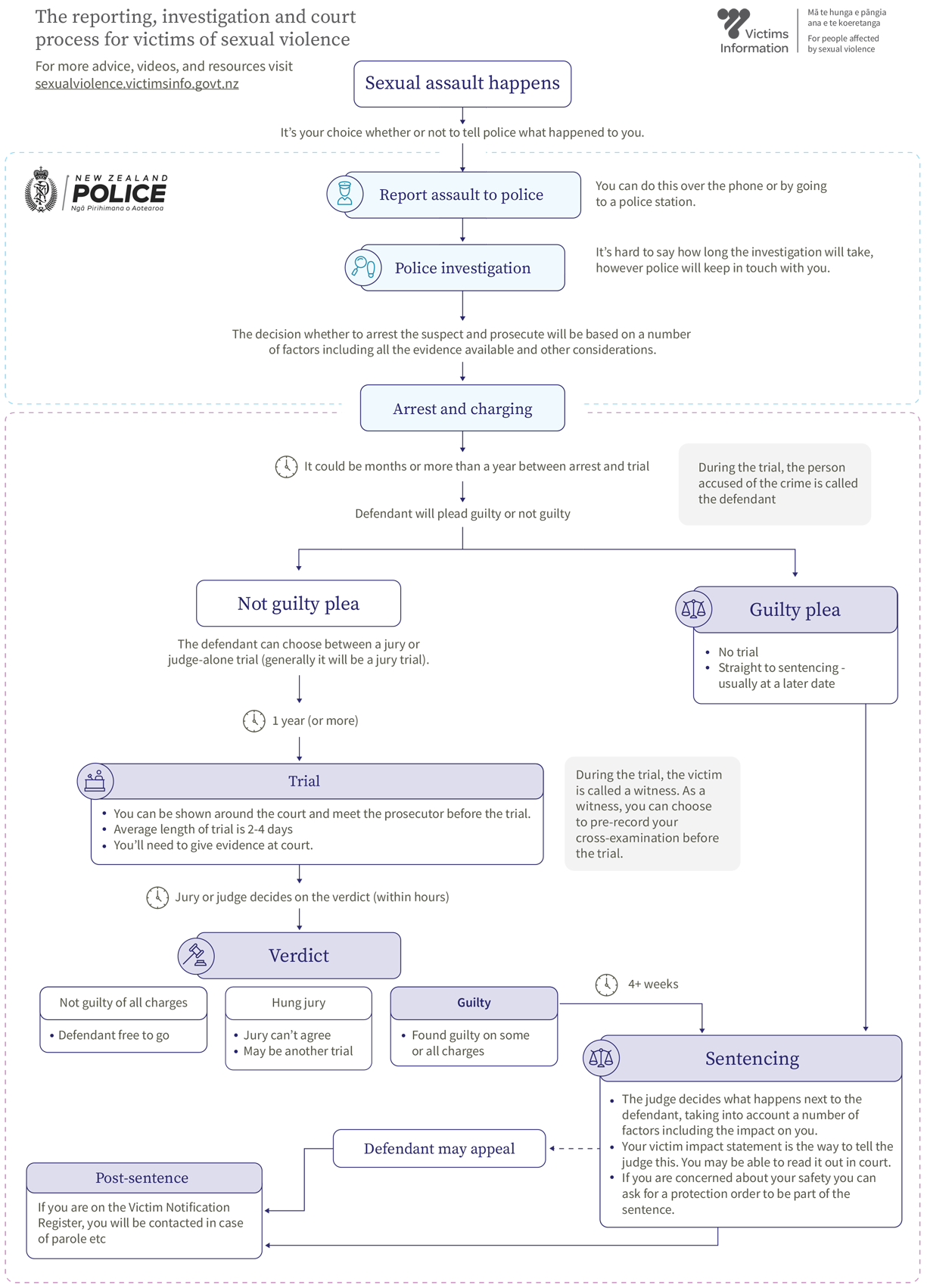[The process] was a million times harder than I thought it would be. But I don’t regret it. If I had to do it again, I would.
Anonymous victim-survivor
The defendant appears in court
After the investigation, and once charges have been filed, a date will be set for the defendant’s first appearance in court. They may appear in court a few times, but you usually won’t have to until you give evidence at the actual trial.
Find out more about what happens before the trial.
Click here for an accessible version of the court process diagram [DOCX, 17 KB].
Pre-trial hearings
In the lead up to the trial there’ll be some behind the scenes administration and pre-trial matters that the prosecutor will progress – you usually won’t have to attend these or any trial callovers. Your police officer in charge, Sexual Violence Victim Advisor or support person from a specialist support agency will keep you informed as things progress; it can be a slow process.
Find out more about what happens before the trial.
The trial
Trials are usually heard by a jury, but the defendant can ask for a Judge-alone trial. The length of the trial may be a few days or it could be longer depending on the number of charges and the complexity of the case. The only time you must be at court during the trial is to give your evidence.
Find out more information about the trial.
A verdict is reached
Finally, after all the evidence has been presented and the Judge has reviewed both sides, the jury will go to the jury room and discuss what's been said. Based on the evidence, they’ll decide whether the defendant is guilty or not guilty.
If the jury is unable to decide on a verdict, the Judge may choose to discharge the jury and there may be a new trial with a new panel of jurors at a later date.
In the case of a Judge-alone trial, the Judge will take time to consider all the evidence presented before coming to a verdict.
Find out more information about the trial.
Sentencing
If a defendant is found guilty on any of the charges, a sentencing hearing will be scheduled for a later date.
Find out more information about what happens after the trial.
